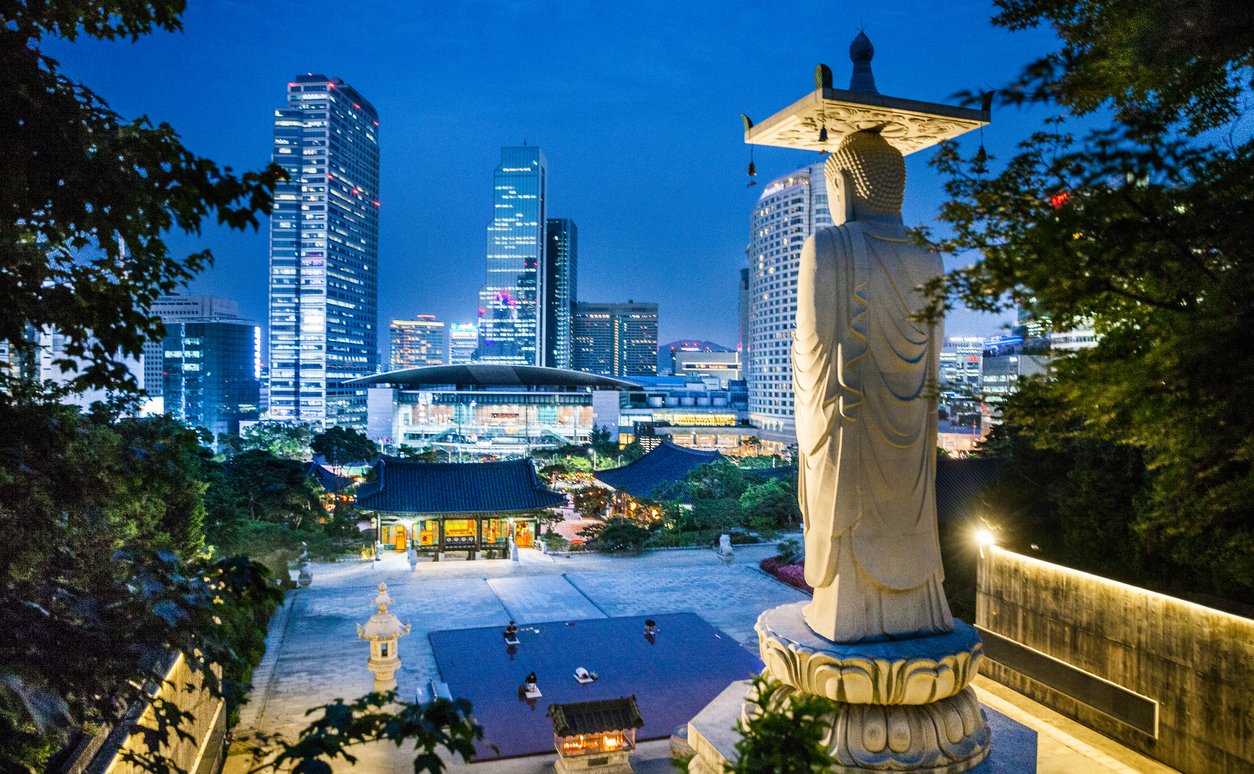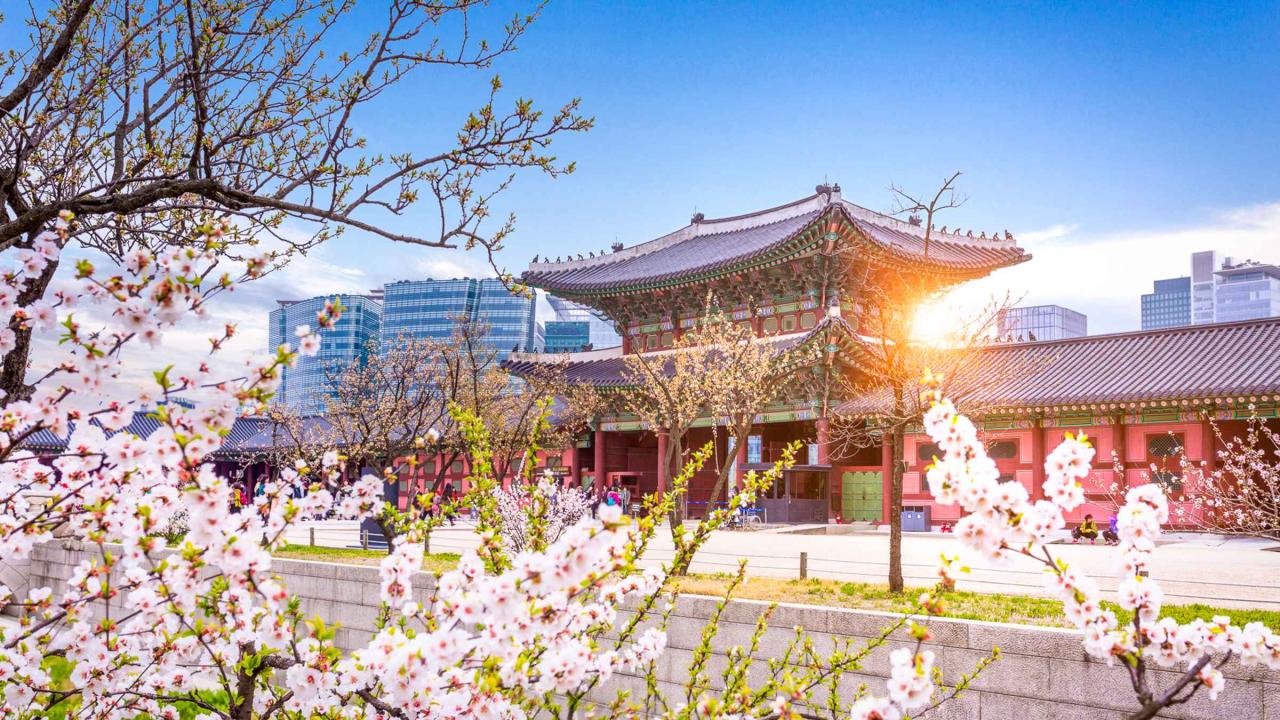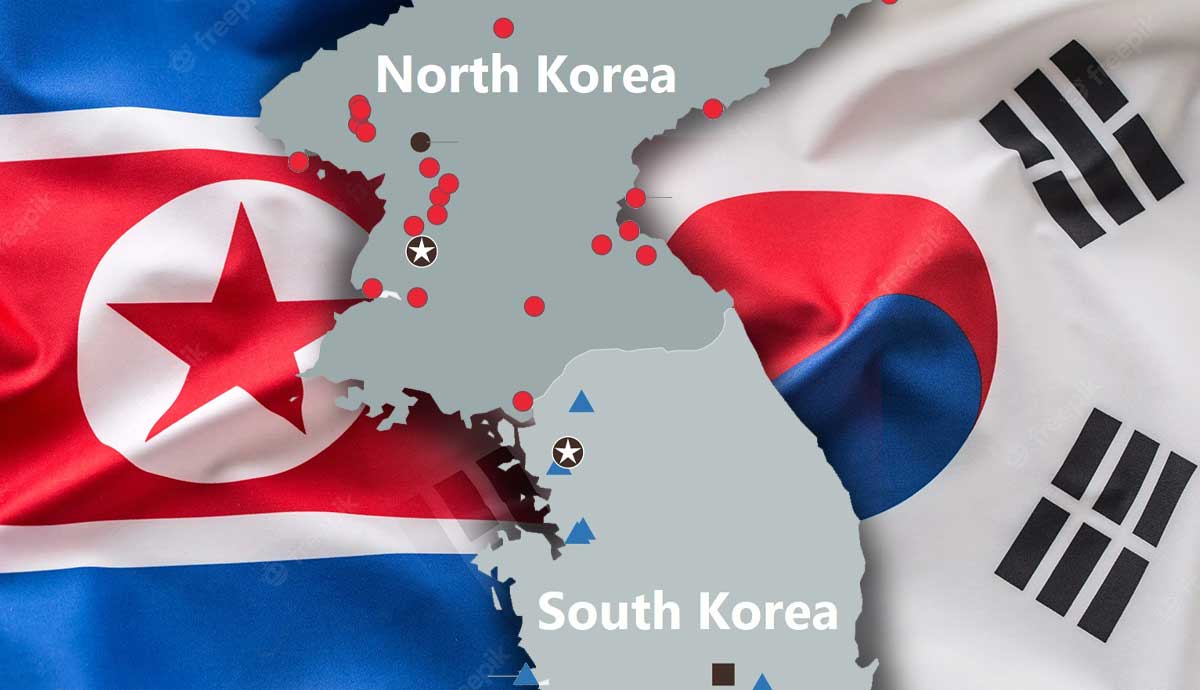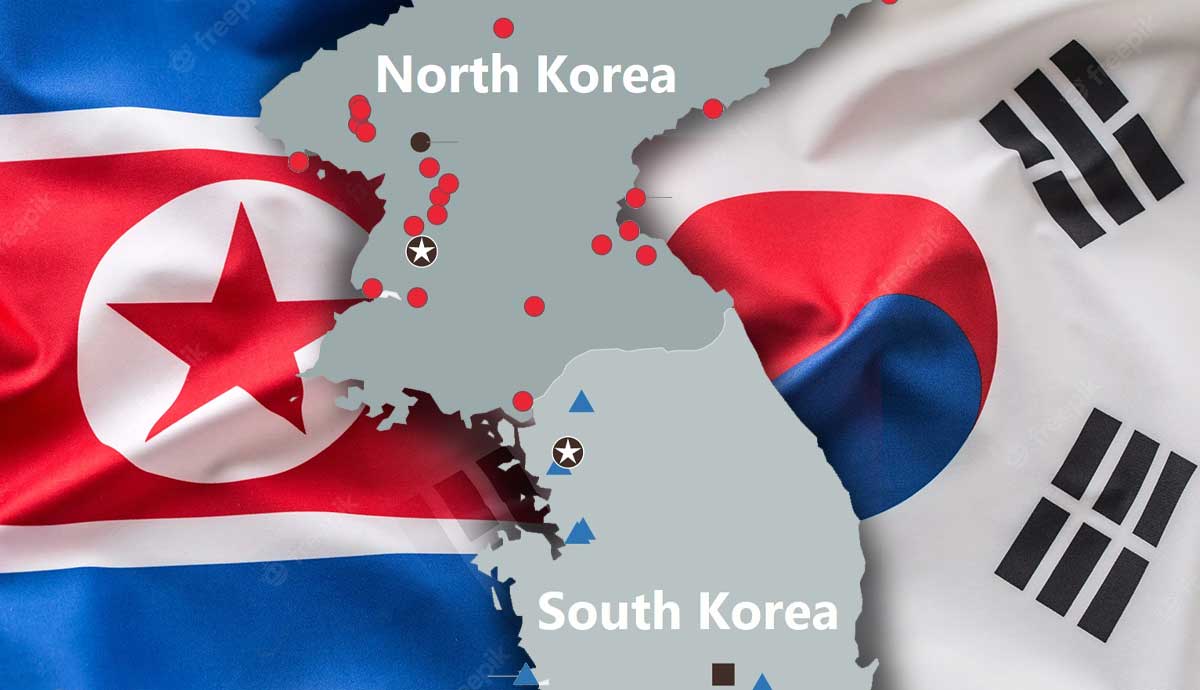South Korea, a dynamic nation nestled on the Korean Peninsula, boasts a captivating blend of ancient traditions and cutting-edge technology. From its remarkable economic rise, often dubbed the “Miracle on the Han River,” to the global phenomenon of K-pop and K-dramas, South Korea offers a fascinating study in cultural dynamism and rapid modernization. This exploration delves into the nation’s rich history, vibrant culture, robust economy, and complex political landscape, painting a comprehensive picture of this influential Asian power.
We’ll trace South Korea’s journey from the devastation of the Korean War to its emergence as a technological powerhouse and global cultural influencer. We’ll examine the key factors behind its economic success, the challenges it faces in the 21st century, and the unique aspects of its society and culture. Get ready to discover the many facets of this intriguing country.
South Korean History
South Korea’s history is a complex tapestry woven with threads of ancient kingdoms, colonial oppression, war, and remarkable economic and democratic transformation. Understanding this history is crucial to grasping the nation’s present-day political landscape and cultural identity.
Key Events Shaping Modern South Korea’s Political Landscape
Several pivotal events have shaped South Korea’s political trajectory. The division of the Korean peninsula after World War II, followed by the devastating Korean War (1950-1953), created a lasting geopolitical division and deeply impacted South Korean society. The subsequent decades witnessed periods of authoritarian rule, punctuated by periods of social unrest and pro-democracy movements. The Gwangju Uprising in 1980, a brutal crackdown on pro-democracy protesters, remains a significant symbol of the struggle for freedom.
The transition to democracy in the late 1980s, marked by the rise of civilian governments and the strengthening of democratic institutions, represents a crucial turning point.
The Impact of the Korean War on South Korean Society and Development
The Korean War left an indelible mark on South Korean society. The conflict resulted in widespread devastation, massive loss of life, and a deep sense of national trauma. The war’s aftermath significantly impacted South Korea’s economic development, initially hindering progress but later providing a catalyst for rapid industrialization and economic growth fueled by significant foreign aid.
The Transition from Authoritarian Rule to Democracy in South Korea
The transition from authoritarian rule to democracy was a gradual yet transformative process. It involved sustained efforts by pro-democracy activists, students, and citizens who courageously challenged the existing power structures. The process was characterized by a series of political reforms, including the establishment of a more independent judiciary and a free press, leading to a more inclusive and participatory political system.
A Comparison of South Korea’s Socio-Economic Development with Other East Asian Nations
South Korea’s remarkable economic growth, often referred to as the “Miracle on the Han River,” stands as a significant achievement in East Asia. Compared to its neighbors like Japan, Taiwan, and Singapore, South Korea experienced a rapid and sustained period of industrialization and modernization, although each nation followed a unique path, influenced by varying political systems and initial conditions. While all four nations achieved high levels of economic development, South Korea’s rapid catch-up was particularly noteworthy.
South Korean Economy
South Korea’s economic success story is a compelling example of rapid industrialization and export-led growth. This section explores the factors that contributed to this success, the current state of the economy, and the challenges it faces in the 21st century.
Factors Contributing to South Korea’s Economic Success (“Miracle on the Han River”)
Several factors contributed to South Korea’s economic miracle. These include government-led industrial policies focused on export promotion, significant investment in education and human capital, technological innovation, and a strong work ethic. Furthermore, strategic alliances with foreign companies and access to international markets played a significant role. The chaebols, large family-controlled conglomerates like Samsung and Hyundai, also played a crucial role in driving economic growth through aggressive expansion and diversification.
Overview of South Korea’s Major Industries and Export Markets
South Korea’s economy is dominated by manufacturing, particularly in electronics, automobiles, shipbuilding, and petrochemicals. These industries are heavily export-oriented, with major markets including the United States, China, and the European Union. The country also has a growing service sector, including finance, tourism, and technology services.
Challenges Facing the South Korean Economy in the 21st Century
Despite its past successes, the South Korean economy faces several challenges. These include an aging population, rising income inequality, increasing competition from other Asian economies, and the need to transition to a more sustainable and innovation-driven growth model. Furthermore, geopolitical risks and global economic uncertainty pose significant threats.
Comparison of South Korea’s Economic Performance Indicators with Regional Competitors
This table provides a snapshot comparison, focusing on key indicators. Actual figures vary depending on the source and year.
| Indicator | South Korea | Japan | China |
|---|---|---|---|
| GDP (Nominal, USD Trillion) | ~1.8 | ~4.9 | ~19 |
| GDP per Capita (USD) | ~35,000 | ~40,000 | ~10,000 |
| Unemployment Rate (%) | ~3 | ~2.5 | ~4 |
| Inflation Rate (%) | ~2 | ~0 | ~2 |
South Korean Culture
South Korean culture is a vibrant blend of tradition and modernity, deeply influenced by its history and geography. This section explores various aspects of this rich and diverse culture.
Examples of Traditional South Korean Art Forms and Their Significance
Traditional Korean art forms, such as calligraphy (seoye), painting (minhwa), pottery (doja), and music (pansori), reflect the nation’s history and philosophical beliefs. These art forms often incorporate elements of nature, spirituality, and Confucian values. For example, minhwa paintings often depict scenes from nature or folklore, while pansori, a genre of narrative singing, tells epic stories of Korean history and mythology.
The Influence of K-pop and K-dramas on Global Culture
K-pop and K-dramas have achieved phenomenal global popularity, significantly impacting global culture. These forms of entertainment showcase South Korea’s creativity and technological prowess, creating a global fan base and influencing fashion, music, and entertainment trends worldwide. Their success is attributed to high-quality production, catchy melodies, compelling narratives, and effective marketing strategies.
Key Elements Defining South Korean Cuisine and its Regional Variations
Korean cuisine is known for its diverse flavors and the balance of ingredients. Kimchi, fermented cabbage, is a staple food, and dishes often feature a harmonious blend of spicy, sweet, sour, and savory tastes. Regional variations exist, with seafood prominent in coastal areas and more emphasis on meat and vegetables in inland regions. The use of rice, noodles, and various side dishes (banchan) are common characteristics.
A Presentation Showcasing the Diversity of South Korean Cultural Traditions
A presentation on South Korean cultural traditions could include sections on traditional clothing (hanbok), festivals (Chuseok, Seollal), martial arts (Taekwondo), and traditional games. It would highlight the unique aspects of each tradition, illustrating their historical context and ongoing relevance in contemporary South Korean society. Visual aids such as images and videos would enhance the presentation.
South Korean Society
South Korean society is characterized by a complex interplay of traditional values and modern influences. This section examines the social structures, challenges, and values that shape South Korean life.
The Role of Family and Social Hierarchy in South Korean Society
Family and social hierarchy play significant roles in South Korean society. Filial piety (hyo) is a deeply ingrained value, emphasizing respect for elders and ancestors. A hierarchical structure exists in various social settings, influencing interactions and decision-making processes. This structure is gradually changing, but it still significantly shapes social dynamics.
Challenges Faced by Younger Generations in South Korea
Younger generations in South Korea face numerous challenges, including intense academic pressure, high unemployment rates, and the rising cost of living. The pressure to succeed academically and secure stable employment creates significant stress and anxiety. Furthermore, the increasing competition for limited resources and opportunities contributes to social inequality.
Comparison of South Korean Social Values with Those of Western Societies
Compared to many Western societies, South Korean society places greater emphasis on collectivism, conformity, and social harmony. Individualism, while gaining traction, remains less prominent than in Western cultures. Differing views on work-life balance, family structures, and social interactions also exist. These differences stem from historical, cultural, and philosophical factors.
Significant Social Issues Currently Facing South Korea
South Korea faces several significant social issues, including income inequality, an aging population, gender inequality, and mental health concerns. These issues require comprehensive policy responses to ensure a more equitable and inclusive society. Addressing these challenges is crucial for South Korea’s long-term social and economic well-being.
South Korean Politics
South Korea’s political system is a vibrant democracy with a unique history. This section delves into the structure of the government, major political parties, and the complex relationship with North Korea.
South Korea, known for its vibrant culture and technological advancements, sadly shares the global experience of air travel tragedies. Thinking about the devastating impact of such events, it’s worth remembering the recent airplane crash halifax , a stark reminder of the risks involved in air travel. This highlights the importance of continued safety improvements, not only in Canada, but globally, impacting countries like South Korea as well.
Structure and Functions of the South Korean Government
South Korea operates under a presidential system, with a president as head of state and government. The legislative branch, the National Assembly, is bicameral, consisting of the National Assembly and the Supreme Court. The judicial branch is independent and responsible for interpreting laws and ensuring justice.
Major Political Parties and Their Ideologies
South Korea’s political landscape is dominated by several major parties, each with distinct ideologies. These parties often represent different approaches to economic policy, social issues, and foreign relations. The political spectrum encompasses liberal, conservative, and centrist viewpoints.
Relationship Between South Korea and North Korea
The relationship between South and North Korea remains complex and tense, marked by periods of cooperation and conflict. The division of the Korean Peninsula has resulted in a protracted state of conflict, although efforts toward dialogue and reconciliation have been made at various times.
Description of the South Korean Electoral System
South Korea employs a mixed-member proportional representation system for its National Assembly elections. This system combines elements of proportional representation and single-member districts, aiming to balance representation of different political parties and regional interests.
South Korea’s tech scene is booming, constantly pushing boundaries in innovation. To see a truly spectacular display of technological artistry on a massive scale, check out the breathtaking visuals of the china dragon drone show ; it’s a stunning example of coordinated drone technology. Then consider how this inspires South Korea’s own advancements in drone technology and its potential future applications.
South Korean Technology
South Korea is a global technological powerhouse, known for its innovation in electronics, telecommunications, and other sectors. This section explores the key players, advancements, and the role of technology in shaping South Korean society.
South Korea’s Leading Technology Companies and Their Global Impact

Companies like Samsung, LG, and Hyundai have become global leaders in various technological fields, impacting global markets and setting industry standards. Their innovations in electronics, automobiles, and shipbuilding have shaped global technological landscapes.
South Korea’s Advancements in Telecommunications and Electronics
South Korea has made significant advancements in telecommunications and electronics, leading in areas such as 5G technology, smartphone manufacturing, and semiconductor production. These advancements have contributed to the country’s economic growth and improved the quality of life for its citizens.
The Role of Technology in Shaping South Korean Society
Technology plays a pervasive role in shaping South Korean society, impacting communication, education, healthcare, and daily life. The widespread adoption of technology has created new opportunities and challenges, requiring ongoing adaptation and policy adjustments.
Timeline Demonstrating Key Milestones in South Korea’s Technological Development

A timeline would showcase key milestones, from early industrialization to the development of cutting-edge technologies. This would highlight the strategic investments, innovations, and government policies that fueled South Korea’s technological rise.
South Korean Geography and Environment
South Korea’s geography and environment have significantly influenced its history, culture, and development. This section examines the geographical features, environmental challenges, and efforts towards sustainable development.
Geographical Features of South Korea and Their Impact on Development
South Korea is a mountainous peninsula with a relatively small land area. Its mountainous terrain has influenced its agricultural practices and infrastructure development. The country’s long coastline has also played a crucial role in its economic development, facilitating trade and fishing.
Environmental Challenges Facing South Korea, Such as Pollution and Climate Change
South Korea faces significant environmental challenges, including air and water pollution, deforestation, and the impacts of climate change. Rapid industrialization and urbanization have contributed to environmental degradation, requiring substantial efforts towards mitigation and adaptation.
South Korea’s Efforts to Promote Sustainable Development
South Korea has implemented various policies and initiatives to promote sustainable development, including investments in renewable energy, stricter environmental regulations, and public awareness campaigns. These efforts aim to balance economic growth with environmental protection.
Impact of Geographical Factors on South Korean Agriculture
South Korea’s mountainous terrain and limited arable land have influenced its agricultural practices. The country has developed intensive farming techniques to maximize agricultural output, but faces challenges related to land scarcity and climate change.
South Korean Education System
South Korea’s education system is renowned for its emphasis on academic achievement and its contribution to the nation’s economic success. This section explores the structure, strengths, weaknesses, and reforms implemented in the system.
Structure and Curriculum of the South Korean Education System

The South Korean education system is highly structured, with a strong emphasis on standardized testing and academic performance. The curriculum focuses on core subjects such as mathematics, science, and language, with a competitive environment that drives students to excel.
Strengths and Weaknesses of the South Korean Education System
The system’s strengths include its high literacy rates, well-trained teachers, and strong emphasis on STEM education. However, weaknesses include intense academic pressure on students, limited creativity and critical thinking skills development, and a focus on rote learning.
Comparison of the South Korean Education System with Other Education Systems Globally

Compared to other high-performing education systems globally, such as those in Finland, Canada, and Singapore, the South Korean system differs in its emphasis on standardized testing and competition. While it achieves high scores in international assessments, concerns exist regarding student well-being and the development of holistic skills.
Examples of Successful Educational Reforms Implemented in South Korea
South Korea has implemented various educational reforms aimed at addressing some of the system’s weaknesses. These include efforts to reduce academic pressure, promote creativity, and improve teacher training. The ongoing evolution of the system seeks to balance academic excellence with student well-being.
South Korea, with its bustling cities and advanced technology, also has a robust aviation system. However, it’s important to be aware of global aviation safety, and you can check resources like this one for potential incidents: plane crashes december 2025 to stay informed. Understanding potential risks, even if unlikely, is part of responsible travel planning, especially when considering trips to South Korea or anywhere else in the world.
Conclusive Thoughts
South Korea’s story is one of resilience, innovation, and remarkable transformation. From overcoming the hardships of war and authoritarian rule to becoming a global leader in technology and culture, its journey is both inspiring and instructive. Understanding South Korea’s past, present, and future offers valuable insights into the complexities of globalization, economic development, and cultural influence in the modern world.
Its continued evolution promises to shape global trends for years to come, making it a compelling subject for ongoing study and fascination.
FAQ Corner
What is the official language of South Korea?
Korean.
What is the currency of South Korea?
The South Korean won (KRW).
What is the capital city of South Korea?
Seoul.
What are some popular traditional Korean foods?
Kimchi, Bibimbap, Bulgogi.
What is the age of majority in South Korea?
19 years old.
